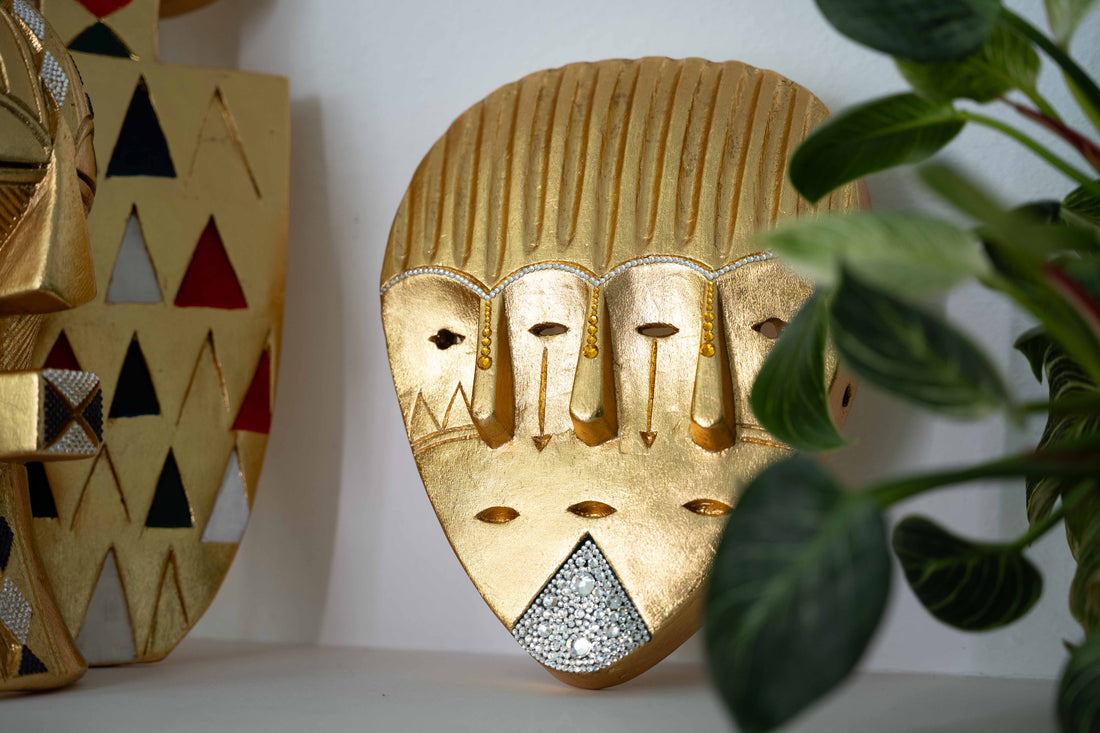
Banso Masks from Cameroon: Majesty, Law & Courtly Art
Share
Guardians of Tradition: The Majestic Banso Masks from Cameroon
Imagine a region shaped by green hills and powerful kingdoms. Welcome to the Grassfields of Cameroon, a cradle of African courtly art. Here, at the heart of this vibrant cultural landscape, the Banso people (also known as Nso) created masks of unique expressive power and dignity. These objects are not silent decorations; they are active participants in social and political life—the faces of authority and guardians of a deeply rooted order.
The Nso Kingdom: A Center of Power and Art
The Banso people are part of the historic Nso Kingdom, one of the most significant monarchies in the Cameroonian Grassfields. At the head of this complex society stood the king, the Fon, whose authority was both political and spiritual. In this context, art was never merely decorative. It was an essential part of the display of power, social control, and ritual practice. The masks of the Banso are therefore direct reflections of this courtly structure—created to impress, regulate, and represent.
The Faces of Authority: The Function of Banso Masks
The masks did not appear arbitrarily. Their use was closely linked to the activities of powerful secret societies that acted on behalf of the Fon.
-
The Ngwerong Society: This society functioned as the king’s executive arm—a kind of police and judicial body rolled into one. When masked members of the Ngwerong appeared, they spoke not as individuals but as the embodiment of royal law. They were used in important legal proceedings, for collecting debts, or for announcing decrees. Their presence was an unmistakable sign that the highest authority of the kingdom was now acting.
- Royal Ceremonies and Festivals: Beyond their judicial role, the masks played a central part in the kingdom's major events. At the enthronement of a new Fon, at the funerals of high-ranking dignitaries, or at annual festivals, the masks danced to honor the history of the people, secure the continuity of rule, and unify the community.
The Aesthetic of Dignity: Style and Features
Although there is a variety of styles, many classic Banso masks have recurring features that reflect their function:
-
Form and Expression: They are often impressive helmet masks that enclose the dancer's entire head. The facial features are highly stylized and exude a serious, dignified tranquility. A high, domed forehead symbolizes wisdom, while the often closed or narrow eyes suggest a state of inner concentration and spiritual vision.
- Material and Patina: The masks are masterfully carved from a single piece of wood. Over decades of ritual use, they developed a deep, often encrusted patina from offerings, smoke, and sweat. This surface is not dirt but an integral part of their history and spiritual charge. Unlike other Grassfields cultures known for their beadwork, many Banso masks rely on the pure power of their sculptural form and the expressive strength of the dark, worked wood.
A Banso mask is an impressive testament to how art and power can merge. It is an object that stood for order, law, and the stability of an entire society. Its sculptural quality and the quiet intensity of its expression make it a fascinating work of art today that resonates far beyond its original context. It embodies a legacy of authority and masterful craftsmanship—a timeless vision that captivates collectors and art lovers around the world.
